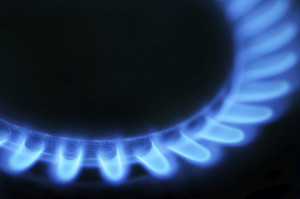The New Delhi WELS offered a platform for energy leaders to explore solutions in order to energise social innovation as a key strategy for solving "Energy Trilemma": finding the right balance between energy security, social equity and environmental impact mitigation. Gas Markets Outlook: Implications of Shale Gas was a major topic and below is a summary of the key points addressed during the discussion.
-
Over the last few years nothing has captured the popular imagination more than shale gas. There is no doubt that shale gas is a significant game changer. It has had a clear impact in for the US, as well as wide-ranging implications for local gas prices, the sea-borne LNG trade and coal trade, and geopolitics.
-
At the Istanbul WELS in April 2012, no firm answers were given on why there is such a large price disparity between regions (3-5 dollars per MMBtu in North America; 7-9 dollars in Europe; and 15-17 dollars in Asia) and how long it would last. The huge price discrepancy can be explained by three elements: market structure (demand and supply), pricing mechanism and interconnection of regional trades.
-
In the US there is little doubt that gas will be extremely abundant for a long time. The present price of gas in the US does not reflect the production cost of shale gas – prices are currently low because gas is a by-product of liquids produced from shale. In Europe, gas supply is abundant, but there is still a lot of reluctance against shale gas. There is potential there, but gas demand growth will be relatively limited. In Asia, demand for gas will remain very strong for a long time, mainly for LNG, which is quite costly. It is very difficult to say what the picture is for non-conventional gas in Asia. The Chinese government expressed ambitious plans for the development of shale gas, but it will take longer than originally thought due to geology, density of population, and water issues.
-
Price mechanisms are very different from one place to another. In the US there is no more relation between oil and gas prices, so it is a pure market. In Europe the situation is balanced, but there is a strong move to disconnect gas price from oil price. On the market, oil and gas are not competing against each other any more Today more than 50% of gas transactions are not made at prices connected to oil and, even in long-term contracts, it is expected that 57% of gas into Europe will no longer be related to oil price. In Asia, there is no market and an alternative to oil price is disputed. For that reason, more and more transactions are made on spot prices. It is difficult to expect any big changes in the way gas will be priced in Asia.
-
It is likely that US shale gas will be exported. DOE studies have indicated that the export of LNG is not contradictory to US national interests. But it is still doubtful that these exports would be sufficient to change the picture of pricing in Asia. The current low US gas price makes export economical, but the normal price level (6-8 dollars per MMBtu), whilst competitive, is not fantastic. One question for Russia is its dependency on Europe where the demand for gas is not growing very much. Russia is turning its eyes to Asia but it is very political issue and there is a long way to go.
-
Between 2000 and 2010, the US doubled its gas reserves, and has perhaps doubled them again since 2010. Some believe US gas will last more than 200 years. This increase is due to two technological advances: hydro-fracking and horizontal drilling. These technologies are not only behind the remarkable shale gas story, but also contribute to the oil boom. It is conceivable that the US will surpass Saudi Arabia as the world’s largest oil producer by 2020.
-
Energy is driving US economic recovery. It is estimated that 826,000 domestic jobs were associated with shale gas development in 2010. These domestic jobs are projected to grow by 50% by 2015 and double by 2020. Natural gas is going to be the fuel of choice for power generation, along with wind, for at least the next 10 years. Government regulations will make it almost impossible to build new coal plants until we can add CCS onto the plants. In 2000, natural gas represented 16% of total power generation; this was up to 25% in 2011 and 32-34% in 2013. In contrast, coal’s percentage of power generation is decreasing, from 52% in 2000 to 42% in 2011 and 37% in 2013. Will shale gas and its low prices make the US less keen to explore renewables? With a hold on coal plants until CCS is integrated and a quietening down of plans to build new nuclear plants in the US, it will be a wind and gas world over the coming years. Shale gas will therefore facilitate renewables in the US.
-
The global LNG market is primarily driven by Asia. LNG is a very fast-growing industry and is predicted to make up 15% of the gas supply by 2030. The LNG market has doubled every ten years in the last two decades and will double again by 2020. To fuel this kind of growth, we expect to see 700 billion dollars of investment in this part of the business over the next 15 years. The market will continue to drive price. In Asia, we expect to see oil price linkage for some time to come, driven by the fundamentals of transportation cost and the cost of supplying infrastructure.
-
In 2000, Chinese gas demand was 2.3 Bcf per day, which is very small in comparison to European demand. By 2011 however, it had increased to 12 Bcf per day. China became a net gas importer in 2007 and now 25% of Chinese gas demand is being met by imports. China is at the beginning of the shale gas journey and it will take some time for this to affect the market. The fundamental cost of shale gas in China is far more expensive than in the US and locations are heavily populated and very mountainous.
Other topics discussed during the New Delhi WELS with summary notes available include : Energy-Water Nexus; Solving Power Equation, Getting The Policy Trilemma Right ; Renewables: Accelerating the Roll-out
The next WELS will take place in Daegu, South Korea on 15 October 2013 as part of the 2013 World Energy Congress.






